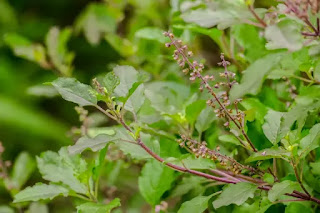Basil Bonanza: 7 famous Basil Varieties and Their Culinary Use:
Welcome to the Basil Bonanza, where we embark on a flavorful journey through the diverse world of basil varieties. Basil, with its aromatic leaves and distinctive flavors, has captivated gardeners, chefs, and herbal enthusiasts for centuries.
Basil is more than just a culinary herb; it's a symbol of culinary culture, cherished for its ability to elevate dishes with its fresh, herbaceous notes. Each basil variety possesses its own unique aroma, flavor profile, and culinary applications, making it a versatile ingredient in kitchens around the globe.
Key Points:
We'll explore the iconic Sweet Basil, renowned for its sweet, slightly peppery taste, and its role as the cornerstone of Italian cuisine. Then, we'll journey to the vibrant landscapes of Southeast Asia to discover the aromatic Thai Basil, prized for its anise-like flavor and spicy undertones, a staple in Thai and Vietnamese cooking.
But the basil journey doesn't end there. We'll uncover the medicinal properties of Holy Basil, revered in Ayurvedic medicine for its stress-relieving and immune-boosting qualities, and we'll delight in the citrusy zest of Lemon Basil, perfect for infusing summertime dishes with a refreshing twist.
1. Sweet Basil: (Ocimum basilicum)
.jpeg)
2. Genovese Basil:(Ocimum basilicum 'Genovese)
Genovese basil is a specific cultivar of sweet basil, known for its intense flavor and aroma. Originating from the Genoa region of Italy, it has broad, shiny leaves and a strong, sweet fragrance. Genovese basil is the classic choice for traditional pesto sauce, thanks to its robust flavor and ability to hold up well to blending.
3. Thai Basil:(Ocimum basilicum var. thyrsiflora)
Thai basil is a distinct variety of basil with a flavor profile that leans towards anise or licorice, with a hint of spice. It features narrow leaves and purple stems, making it visually striking in both the garden and on the plate. Thai basil is a key ingredient in Thai, Vietnamese, and other Southeast Asian cuisines, adding a fresh, aromatic element to dishes like stir-fries, curries, and noodle soups.
4. Holy Basil (Ocimum tenuiflorum)
Holy basil, also known as tulsi, holds significant cultural and medicinal importance in many parts of the world. It has a peppery, slightly bitter flavor and is revered for its purported health benefits, including stress relief and immune support. In addition to its medicinal uses, holy basil is sometimes used in cooking, particularly in Asian cuisines, where it adds a unique flavor to dishes like curries and teas.
5. Lemon Basil:(Ocimum basilicum var. citriodorum)
Lemon basil is aptly named for its bright citrusy aroma and flavor. It has pale green leaves with a mild, lemony scent that pairs beautifully with seafood, poultry, and summer salads. Lemon basil is also a delightful addition to desserts, infusing baked goods and sorbets with a refreshing zing.
6. Purple Basil:
Purple basil, also known as opal basil, boasts stunning dark purple foliage that adds visual interest to any garden or dish. It has a milder flavor compared to sweet basil, with hints of citrus and spice. Purple basil is often used as a garnish or in decorative arrangements, but it can also be used in cooking to add a pop of color to salads, pasta dishes, and infused oils.
7. Cinnamon Basil:(Ocimum basilicum 'Cinnamon')
Cinnamon basil is a lesser-known variety characterized by its warm, spicy aroma reminiscent of cinnamon. It features narrow, dark green leaves with purple stems and flowers. Cinnamon basil adds a unique twist to both sweet and savory dishes, infusing them with a subtle warmth and complexity. It's particularly well-suited for desserts, teas, and fruit salads.
Summing Up:
Basil is undoubtedly a versatile herb, with each variety offering its own distinct flavor, aroma, and culinary possibilities. Whether you're cultivating a herb garden or experimenting in the kitchen, exploring the diverse world of basil is sure to add depth and flavor to your culinary repertoire. So, next time you reach for basil, consider trying a new variety and unlocking a world of delicious possibilities.









Comments
Post a Comment